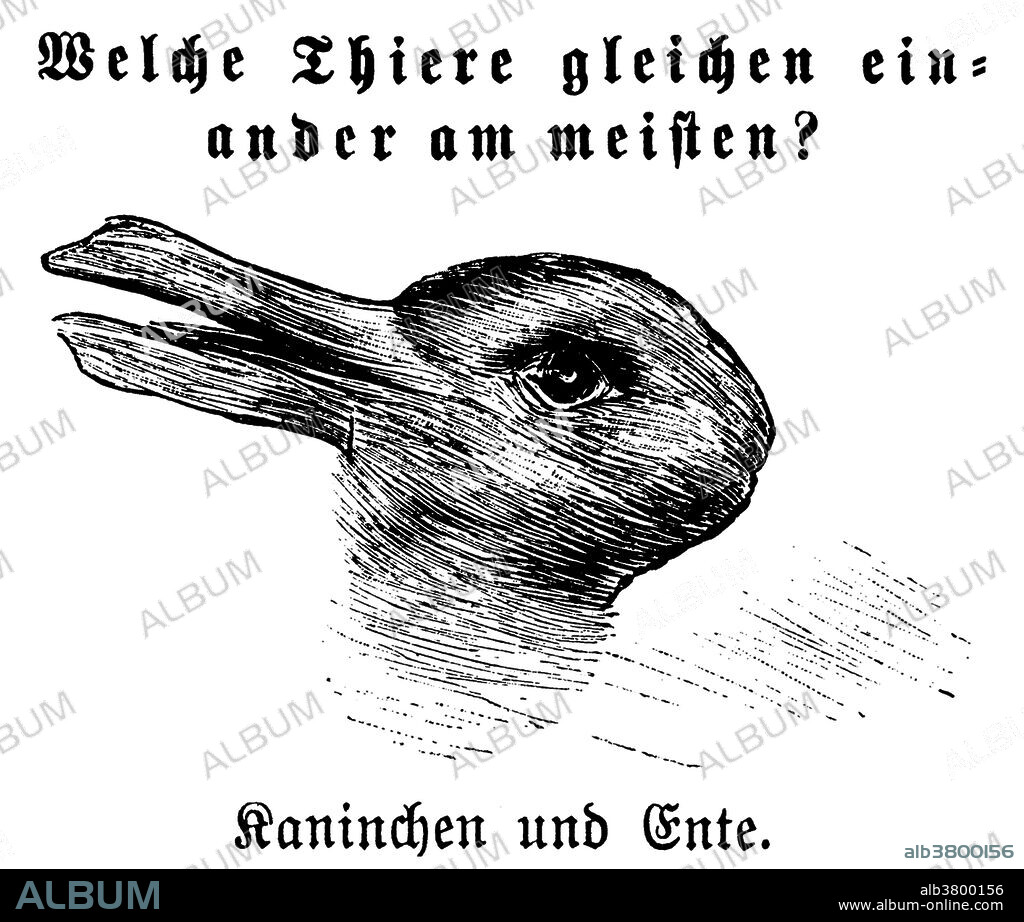alb3800156
Optical Illusion, Rabbit Or Duck? 1892

|
Añadir a otro lightbox |
|
Añadir a otro lightbox |



¿Ya tienes cuenta? Iniciar sesión
¿No tienes cuenta? Regístrate
Compra esta imagen.
Selecciona el uso:

Título:
Optical Illusion, Rabbit Or Duck? 1892
Descripción:
Ver traducción automática
Entitled: "Welche Thiere gleichen einander am meisten? "(Which animals are most like each other?), with "Kaninchen und Ente" (Rabbit and Duck) written underneath. The rabbit-duck illusion is an ambiguous image in which either a rabbit or a duck can be seen. The earliest known version is from a 1892 issue of Fliegende Blätter, a German magazine. An optical illusion is a phenomena where one seems to see something that doesn't exist or with another perspective. It is also called visual illusion and is categorized by visually apparent images. An optical illusion is basically a visually misleading image interpreted by the brain inaccurately. There are three main types: literal optical illusions that create images that are different from the objects that make them, physiological ones that are the effects on the eyes and brain of excessive stimulation of a specific type (brightness, color, size, position, tilt, movement), and cognitive illusions, the result of unconscious inferences.
Crédito:
Album / Science Source / New York Public Library
Autorizaciones:
Modelo: No - Propiedad: No
¿Preguntas relacionadas con los derechos?
¿Preguntas relacionadas con los derechos?
Tamaño imagen:
4200 x 3564 px | 42.8 MB
Tamaño impresión:
35.6 x 30.2 cm | 14.0 x 11.9 in (300 dpi)
Palabras clave:
1892 • ARTE • BLANCO Y NEGRO • CIENCIA • DIBUJO • FENÓMENOS • FONDO BLANCO • HISTORIA • HISTORICO • ILUSION OPTICA • ILUSTRACION • OBRA DE ARTE • PERSPECTIVAS • SIGLO XIX
 Pinterest
Pinterest Twitter
Twitter Facebook
Facebook Copiar enlace
Copiar enlace Email
Email
